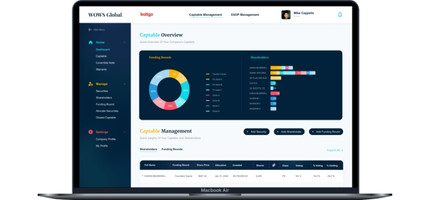Avoid these Cap Table Blunders for Your Startup Success
Cap Table Blunders

In the dynamic world of startups, securing venture capital funding can be a pivotal moment that propels a company to new heights. However, the path to securing this coveted funding is fraught with challenges, and one critical aspect that can either attract or deter investors is the cap table. A well-managed cap table not only reflects the financial health of a startup but also signals its governance and leadership structure. In this article, we will delve into the potential cap table blunders that could hinder a startup's chances of securing venture capital funding and discuss strategies to steer clear of these pitfalls.
One Dominant Investor: Striking the Right Balance
The presence of a lead investor is a common and often essential aspect of fundraising. However, the key is to strike a balance and avoid putting all your eggs in one basket. While a lead investor can provide valuable mentorship and guidance, ceding too much control to a single entity can raise red flags for potential investors. Diversifying your investor base not only mitigates risk but also demonstrates a broad vote of confidence in your startup.
Case Study: The Perils of Overreliance
Consider the cautionary tale of a startup that relied heavily on a single dominant investor. When the investor unexpectedly pulled out, citing strategic shifts, the startup found itself in a precarious situation. The sudden void left by the departure of the dominant investor raised doubts among other potential backers, making subsequent fundraising rounds significantly more challenging.
Ex-Founders with Excessive Equity: Striking a Balance in Leadership Dynamics
The involvement of ex-founders can be both a strength and a potential stumbling block. While their experience and expertise can contribute significantly to the success of the startup, granting them excessive equity can create leadership challenges. Investors may view this as a potential source of internal conflict or as a hindrance to the current leadership team's decision-making authority.
Strategies for Managing Ex-Founder Equity:
- Implementing vesting schedules for ex-founders to align their incentives with the long-term success of the company.
- Negotiating buyback agreements or offering other incentives to encourage ex-founders to relinquish excessive equity.
- Clearly defining the roles and responsibilities of ex-founders to avoid ambiguity and potential power struggles.
Founders' Equity Pre-Seed Round: Balancing Commitment and Dilution
The initial stages of a startup's journey are critical, and investors look for strong commitment from the founders. A common mistake is diluting founder equity too early in the game, potentially signaling a lack of confidence in the project. Investors prefer to see founders holding a substantial stake, ideally around 80% or more, before the seed round.
Showcasing Founder Commitment:
- Bootstrapping and self-funding in the early stages to demonstrate financial commitment.
- Negotiating favorable terms with early-stage investors to minimize founder dilution.
- Communicating a clear vision and strategy to instill confidence in investors about the founders' long-term commitment.
A Zoo of Investors: Streamlining for Success
While securing investment from a diverse group of backers can be beneficial, managing a cap table resembling a zoo can lead to governance issues and operational challenges. A cluttered cap table with numerous, small investors may hinder decision-making processes and create complexities in communication.
Strategies for Cap Table Organization:
- Consolidating smaller investments into larger rounds to streamline the cap table.
- Establishing clear communication channels and reporting structures for investors.
- Regularly updating and maintaining the cap table to reflect changes accurately.
Conclusion:
In the competitive landscape of startup fundraising, a well-structured cap table is a powerful asset. Avoiding common pitfalls, such as relying too heavily on one investor, managing ex-founder equity, balancing founder commitment and dilution, and streamlining a diverse group of investors, can significantly enhance a startup's appeal to venture capitalists. Beyond securing funding, a well-managed cap table sets the foundation for effective governance and leadership, paving the way for sustainable growth. By keeping these key points in mind, entrepreneurs can increase their chances of navigating the venture capital landscape successfully and turning their innovative ideas into thriving businesses.
Related Posts
-

cap table investor relations
Is Your Investor "Cap Table Material"?
Choosing the right investor is like finding a life partner—make sure they’re “cap table material.” Our cheeky checklist will help you spot the keepers from the flings. Read on! -

Cap Table
How to Manage Your Cap Table: A Step-by-Step Guide
Are you a startup founder or entrepreneur struggling with cap table management? Look no further. In this comprehensive article, we have created a step-by-step checklist to simplify the daunting task of managing your cap table. From initial setup to ongoing maintenance, we've got you covered. -

Waterfall Analysis Cap Table
Mastering Waterfall Analysis in Cap Tables: A Comprehensive Guide
In today's dynamic business landscape, understanding and maximizing returns in various exit scenarios is crucial for investors and business owners alike. One powerful tool that facilitates this comprehension is the "waterfall analysis" in a cap table. In this comprehensive guide, we'll delve deeper into the intricacies of waterfall analysis, exploring its significance, functionality, and key features. -

Cap Table
What Is a Cap Table? The Complete Guide to Equity Management
So you’ve started a company and are ready to bring on investors or hire employees. But before you do, you need to get your equity management in order. What does that even mean? Simply put, you need to create a capitalization table, or cap table for short. A cap table tracks who owns shares of your company and details like the type of shares, percentage owned, and value. It’s one of the most important documents for any business. -

Cap Table Startup
4 Reasons Every Startup Should Use a Digital Cap Table
A capitalization table (cap table) is a record of a company’s ownership structure accompanied by the information of the relevant stakeholders. In recent times, companies will often have multiple types of securities from common stock and preferred shares to convertible notes, warrants and options, each with its own unique vesting periods and owned by a multitude of different shareholders. Managing these ever-changing equity structures and various securities as companies go through fundraising rounds can be tedious and time-consuming on manual spreadsheets. -

Cap Table Finance Funding Startup
Startup Cap Table Management in 2022 – What to Know as You Grow
Startups need investment in order to raise capital and grow their business. This funding comes from investors who are known as shareholders and it is no secret that any potential investor will want returns.
